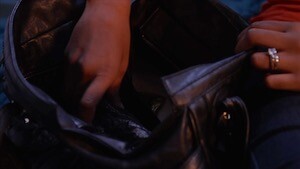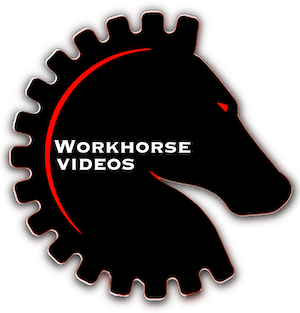
Includes:
- Project Preproduction (Strategy, Messaging, Location Scout & Planning)
- Director / Producer
- Cinematographer
- 2- Lighting Technicians
- Audio Technician
- Production Assistant
- 4k Cinema Camera Package
- Cinema Lighting Package
- Boom & Wireless Microphone Package
- Up to 9 Hours of Shooting
- Stylized Editing & Motion Graphics
ENG production is similar to news gathering or documenting an event, EFP production involves additional planning, more stylized lighting, and crafting message through the editing process.
With proper planning can we shoot enough of the right images to edit an engaging workhorse video.
Upstate Ford Dealers – Television Commercial
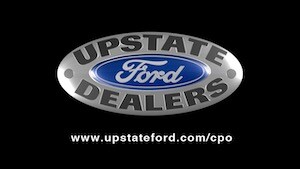 Project Overview
Project Overview
I was hired by an agency to direct this television commercial. I have a lot of experience working with actors, so this was an especially fun project.
Preproduction
The agency wrote the script and with that in hand I held a local casting call. This involved posting notices in the proper places, directing and recording each audition. I was also involved with finding and renting a hotdog cart, choosing the location, hiring crew and finding people for extra roles. The agency handled all, scheduling, negotiations and permits.
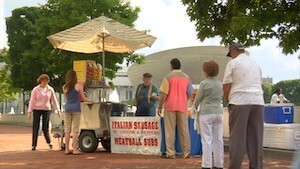 Shooting
Shooting
We had six crew members, including a cinematographer, audio tech, two lighting techs, and a dolly grip. Our lighting setup consisted of 1200-watt daylight par lights pointing into 4×4 diffusion. This was done to fill the faces of the actors. Ideally, we would have had 2500-watt lights, but powering these would have meant bringing a generator, and permits would have required another electrician to accompany the generator.
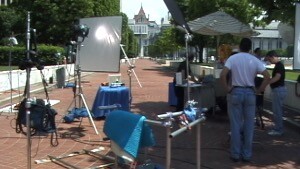
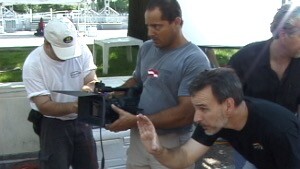
We wanted subtle horizontal, and push-in dolly moves to compliment the energy of the dialogue. This meant having a dolly grip on set. This grip also helped with all-around AV tasks, including setup and breakdown.
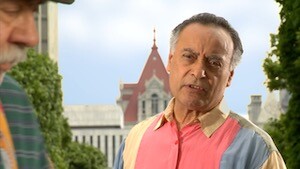
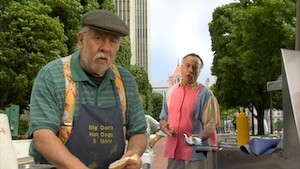
The small lighting package meant we needed to get the lights as close to the actors as possible while still keeping them out of the camera’s field of view.
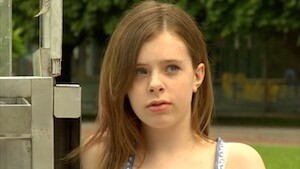
Editing
Our narrative structure was predetermined with a script. So, importing and labeling the camera files were based on camera setups and takes. We set up approximately eight camera shots, including a wide establishing shot. A medium three shot, and over-the-shoulder, two shots and close-ups for each actor. Each camera setup and actor take was marked with a camera slate at the beginning of each. This supplied the labeling information during camera file importing.
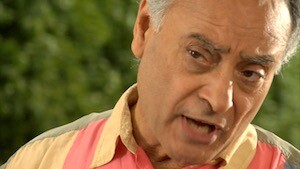
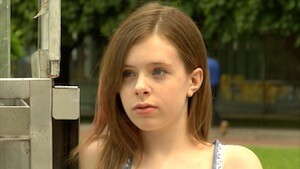
The script is short, so organizing the footage and choosing the best takes went relatively fast. The slow part of editing a scene like this is making sure the best takes also match the actor’s eye-line, body posture and movement. On a larger job this visual information is tracked while shooting by a script/continuity person. On this project the producer and I undertook these duties.

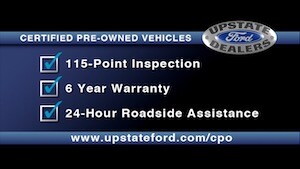
It takes a lot of work to pull of these types of projects, but once you see the commercial you’ll agree it catches your attention. It especially stands out in a local market.
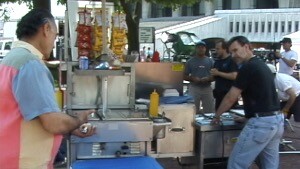
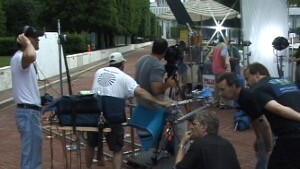
APX – Client Testimonial
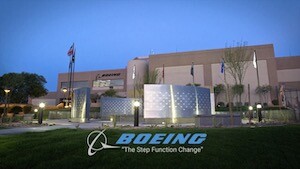 Project Overview
Project Overview
We were hired by APX to travel to a Boeing manufacturing plant in Phoenix, Arizona, and shoot footage for a testimonial video. Boeing used their smart glasses to help them become more efficient in wire harness operations.
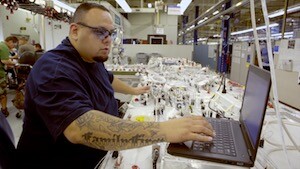 PreProduction
PreProduction
APX had their in-house designer investigate the Boeing site prior to reaching out to us. This included which employees we would work with, follow and interview. Boeing is a military contractor, so we needed security clearances. We reviewed location scout photographs, identified a base station for our equipment, and agreed on areas of the plant where we would shoot interviews and the APX glasses being used.
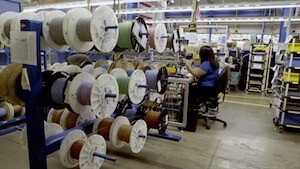
Preproduction and good communication are especially important when doing three-party projects. How we perform affects how our client is seen by their client. Our appearance, our equipment, and our skills are being accessed even before we arrive and especially while we’re on location.
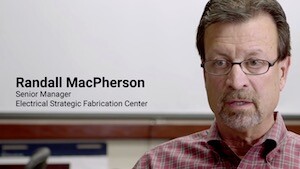
Everybody wants to make sure their products, employees, and process are seen in their best light. Most locations require additional lighting and our camera setups require a certain amount of floor space. We learned how to do this as unobtrusively as possible, so without disrupting operations.
Camera sliders, small jibs, and gimbals can really enhance a project, but they add bulk to the equipment pack. This is a balancing act, and every job is different.
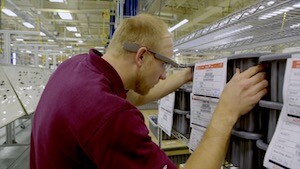
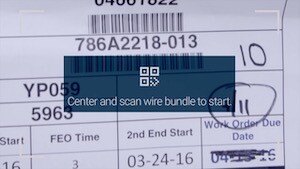
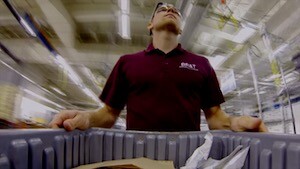 Shooting
Shooting
We shot this project over two days with a three-person crew. I worked as the director/cinematographer, we had two AV technicians, and the client acted as the on-site coordinator.
We traveled with an interview lighting kit and a scoop light for on-floor fill lighting. We also carried a 19-inch monitor and a small camera slider which enabled us to add some dynamic movement to the video.
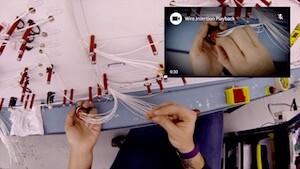
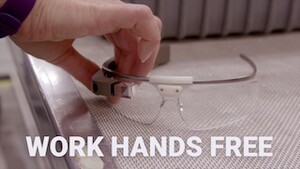 A small camera jib would have added value, but it was not feasible with a three-person crew and our shooting schedule.
A small camera jib would have added value, but it was not feasible with a three-person crew and our shooting schedule.
Editing
We worked with the client to created an outline of what we wanted video’s narrative to be and creative a list of interview questions that would cultivate these sound bites.
This is not an exact science but it’s a great pace to start.
The narrative for this would be built from the interviews and dialogue captured while the employees used the glasses.
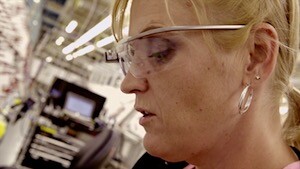

Mute – Television Commercial
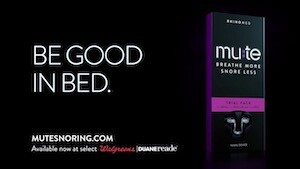 Project Overview
Project Overview
I was hired by the agency as a director/cinematographer. The script had already been written, and the creative treatment called for a head-to-toe green screen shoot. The client would be on set working with me.
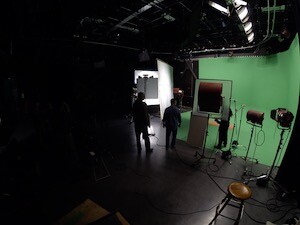
Preproduction
All of the preproduction was done by the agency. My role in pre-production was to review and approve or consult on changes. I went to the studio prior to the shoot and made a list of what lighting equipment I wanted.
Shooting
We shot this with a crew of five, including two lighting technicians, an audio technician, a camera assistant, and myself as director/cinematographer. The agency also hired a makeup person. We lit the green screen with an even wash and pulled our talent as far away from the back wall as we could while still giving him room to walk. I wanted to minimize how much light reflected from the wall and onto him. Even though his black outfit would help I wanted the key to be as clean as possible.
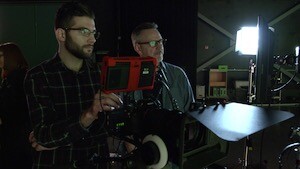
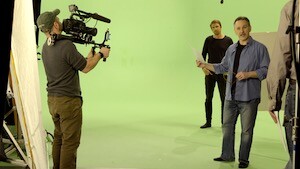
I built a 20×20 foot soft book light to accommodate the actor walking across the set and toward the camera. I had a hard light mounted above and behind. This gave the talent and edge light with a magenta filter on it. This would help neutralize any green reflection spill while also separating him from the background with an edge. Without this edge light his black jacket and pants would have merged with the black background.
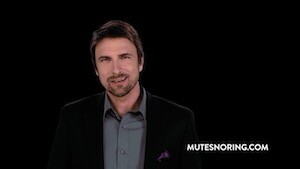
The talent was professional and extremely good so it didn’t take long to settle on a delivery style. We shot a wide shot, and once the agency was happy with the delivery, we did two additional setups, including a head and shoulder close-up as well as a cutaway shot of his hand holding the product.
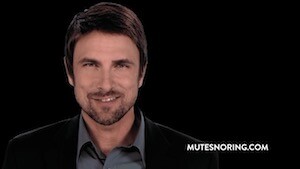
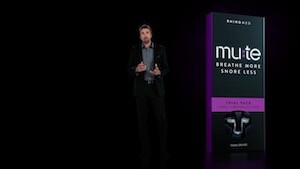
Post Production
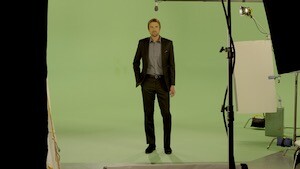 Creating a good key is the goal of professional green screen shooting. You want the background to disappear and the edges of your subject to look natural. The key to this is good lighting. Once the footage is imported and properly labeled and organized, it’s time to use software to make the background disappear. This allows you to replace it with a color or just about anything you want.
Creating a good key is the goal of professional green screen shooting. You want the background to disappear and the edges of your subject to look natural. The key to this is good lighting. Once the footage is imported and properly labeled and organized, it’s time to use software to make the background disappear. This allows you to replace it with a color or just about anything you want.

This process is called keying. The editor picks a portion of the background, and the software samples this. All colors that exactly match this sample, including saturation, hue, and luminance, magically disappear.
The problem begins when portions of the background do not perfectly match. When this occurs, the editor must expand the sample range, and this adjustment starts to affect the subject. Slight lighting variations, including soft shadows, can be adjusted, but the more you need to adjust, the more likely you’ll affect the subject.
If you don’t spend time lighting well, you’ll spend even more time fixing things in post-production.
Everybody is doing green screen these days, so you would assume it’s easy, and it is. But, when you really look, you’ll see it doesn’t hold up.
Alliance for Positive Health – Co-Op Television Commercial
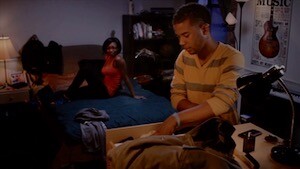 Project Overview
Project Overview
We were hired by the Alliance for Positive Health, Albany, NY. They had received a grant to create a television commercial for play on the local broadcast. The grant stipulated that we were to work closely with active teenage members. The work the staff and the teens did on this project helped us make a better product for thousands less.
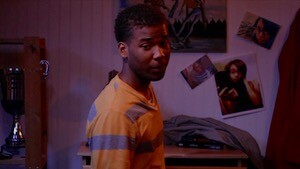 Preproduction
Preproduction
Our role was to work with the teens through the entire process. We held three interactive sessions with the teens, and together we explored the subject matter, conducted role-play scenarios, and brainstormed creative treatments. The group came up with some fairly elaborate ideas and also learned the reality of working with a modest budget. The final creative treatment came from these sessions.
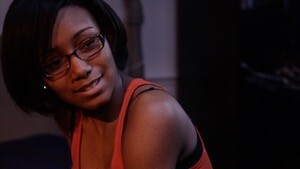
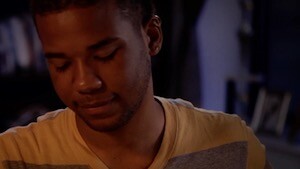 Once the script was finished, we held auditions and rehearsals and did a final rewrite. We were now working with a smaller group of teens and assigned them production roles and delegated preproduction tasks.
Once the script was finished, we held auditions and rehearsals and did a final rewrite. We were now working with a smaller group of teens and assigned them production roles and delegated preproduction tasks.
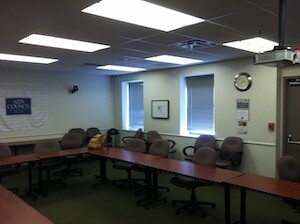
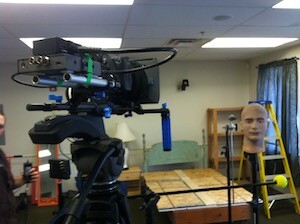
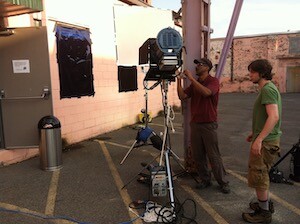 Shooting
Shooting
Before we could shoot, we had to turn an office space into a young man’s bedroom. So, prior to our arrival, tables and chairs were moved out, and bedroom furniture and set dressing props were brought in.
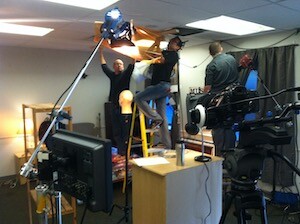 The scene was taking place at night so wanted the bedroom to look window to look as though it was subtly illuminated by city lights.
The scene was taking place at night so wanted the bedroom to look window to look as though it was subtly illuminated by city lights.
It was important to find the right balance between a dark bedroom ambiance and a room too dark for a TV commercial.
 We did this by adding visible lamps in the shot. While these did not produce enough light to illuminate the scene. They did motivate the light that illuminate the actors, the poster, keyboards, bookshelf, and dressers.
We did this by adding visible lamps in the shot. While these did not produce enough light to illuminate the scene. They did motivate the light that illuminate the actors, the poster, keyboards, bookshelf, and dressers.
